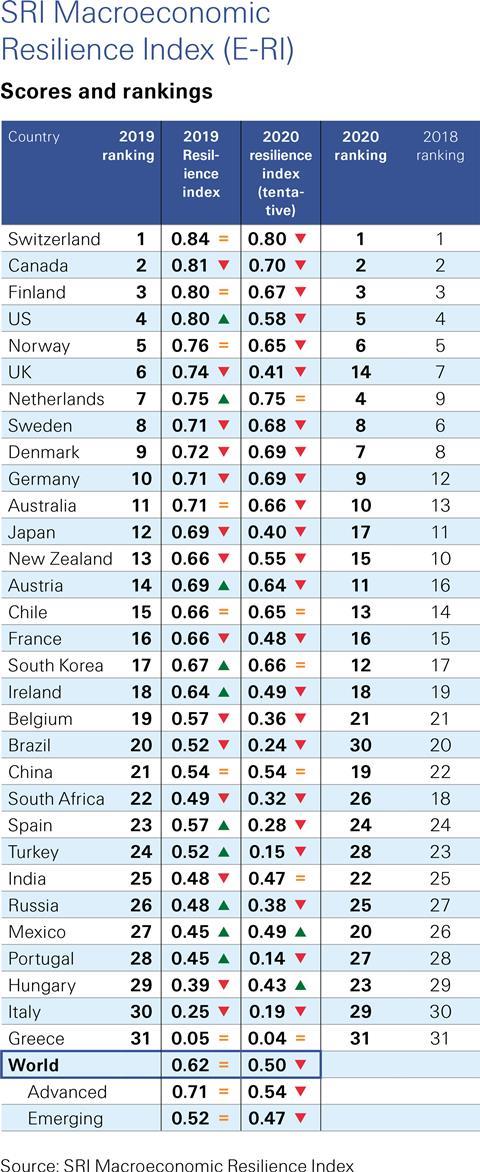The COVID-19 pandemic is expected to reduce global macroeconomic resilience by about 20% in 2020 - Swiss Re Institute
The COVID-19 pandemic is expected to reduce global macroeconomic resilience by about 20% in 2020 from 2019 levels as stimulus packages deplete countries’ fiscal and monetary buffers around the world.
According to the latest annual Swiss Re Institute resilience indices, the UK, Japan and the US will experience the greatest falls in resilience among major economies. Switzerland, Finland and Canada remain the world’s three most resilient countries, reflecting their comprehensive economic strength against future crises.
Global economic resilience held up in 2019 compared with 2018, but the world entered the COVID-19 crisis with less shock-absorbing capacity than before the global financial crisis of 2008-09, the last major economic downturn.
Government responses to COVID-19 are expected to significantly lower global economic resilience this year. While stimulus packages have cushioned the blow to the global economy, they have run down many countries’ fiscal and monetary reserves.
“The fiscal and monetary stimulus response to COVID-19 was key to cushioning the economic impact of government-ordered lockdowns,” said Jerome Jean Haegeli, group chief economist at Swiss Re. “However, the reality of wartime-like spending is that it leaves much less room for future policy manoeuvre. What’s more, the key economic policy risk is that these temporary government measures are too challenging to unwind and become permanent, leaving economies dependent on ongoing stimulus. A focus on replenishing resilience by reinstating fiscal and monetary buffers, through structural reforms to improve long-term growth prospects, will be critical.”
Protection gap grows
Insurance resilience against three major risks – mortality, health spending and natural catastrophes – weakened in 2019, the indices show. The combined global protection gap for the three perils is calculated as reaching a new high of $1.24 trillion.
Globally, mortality resilience declined the most, driven by a widening of the mortality protection gap in the Asia-Pacific region, where China’s protection gap expanded due to rapidly growing household debt. Health resilience was stable despite some deterioration in emerging markets. The global health protection gap widened by more than 5% to $588 billion.
Natural catastrophe resilience was lowest of the three risk areas. Swiss Re Institute expects that health and mortality protection gaps will widen as households grapple with lower incomes, higher healthcare costs and the financial consequences of losing a breadwinner as a result of the pandemic.
“The widening global protection gap is a huge opportunity for insurers to fulfil their mandate as risk absorbers and improve societal resilience,” Haegeli said. “In times of crisis, households need risk protection. Insurance is a key tool to help households reduce their financial vulnerability in disruptive environments.”
“Indexing” resilience and measuring how prepared society is to face mounting risks can help policymakers to dial down exposure to challenges such as a slowing economy, rising national debt, climate change and pressure on natural resources.





















No comments yet